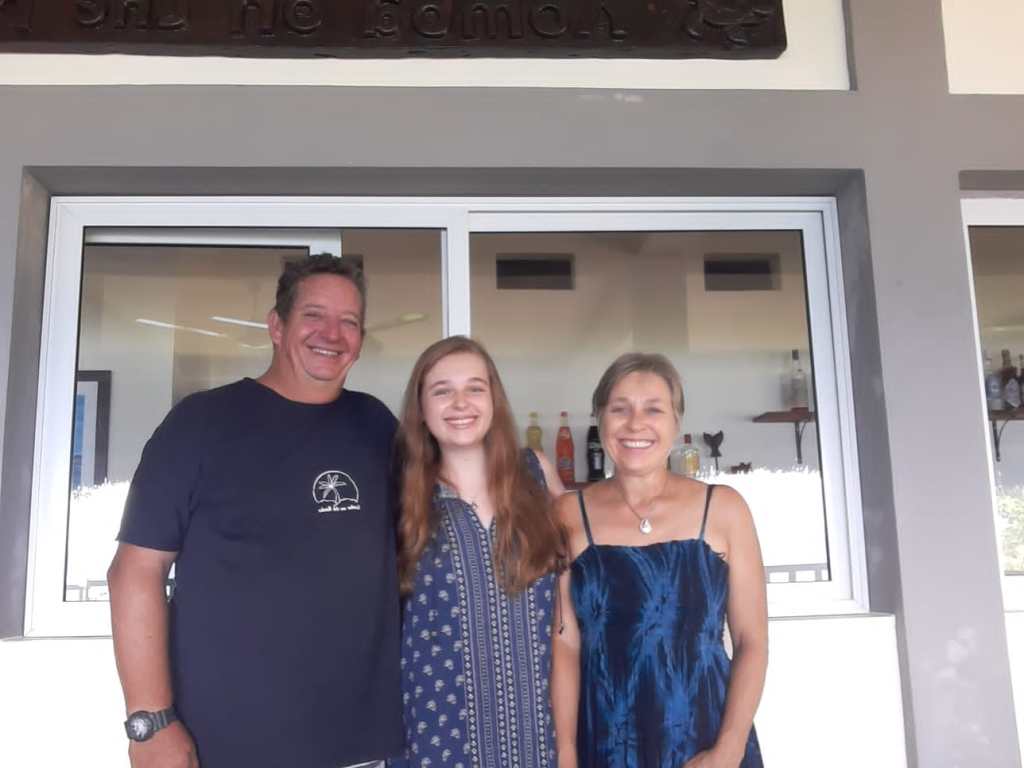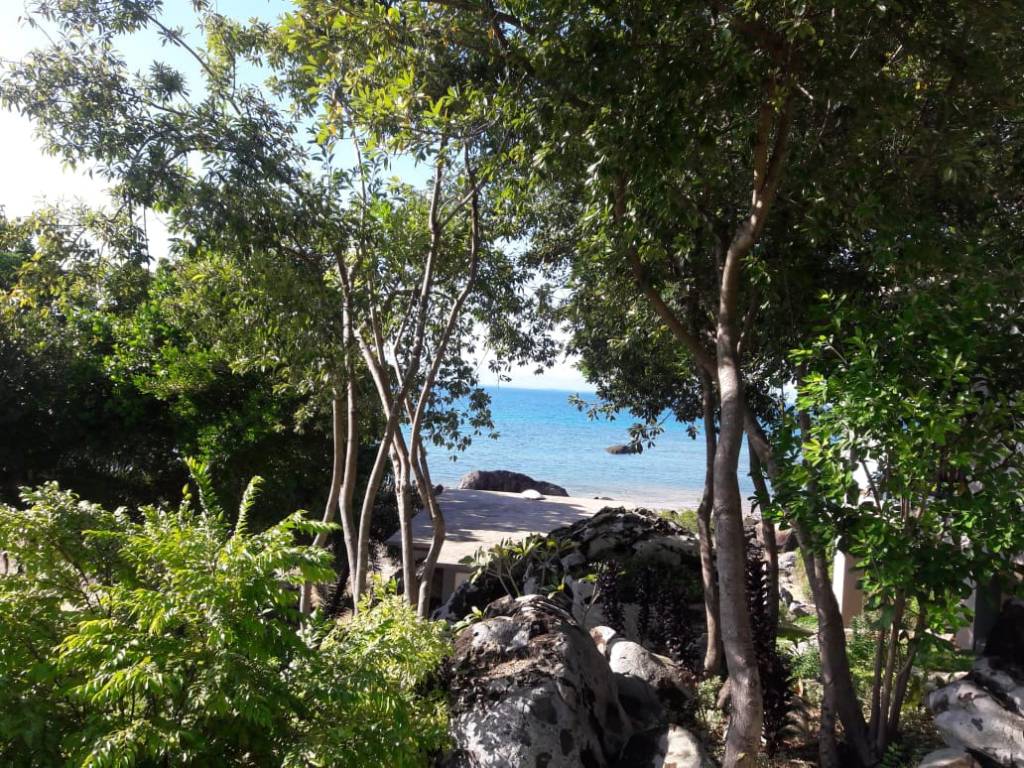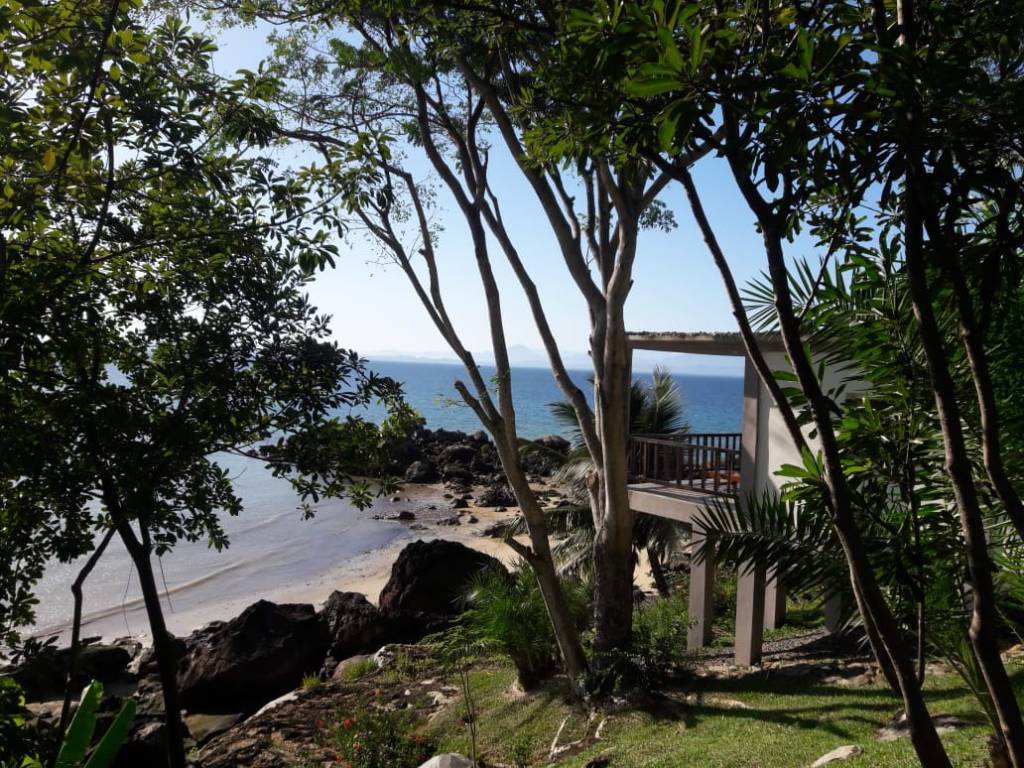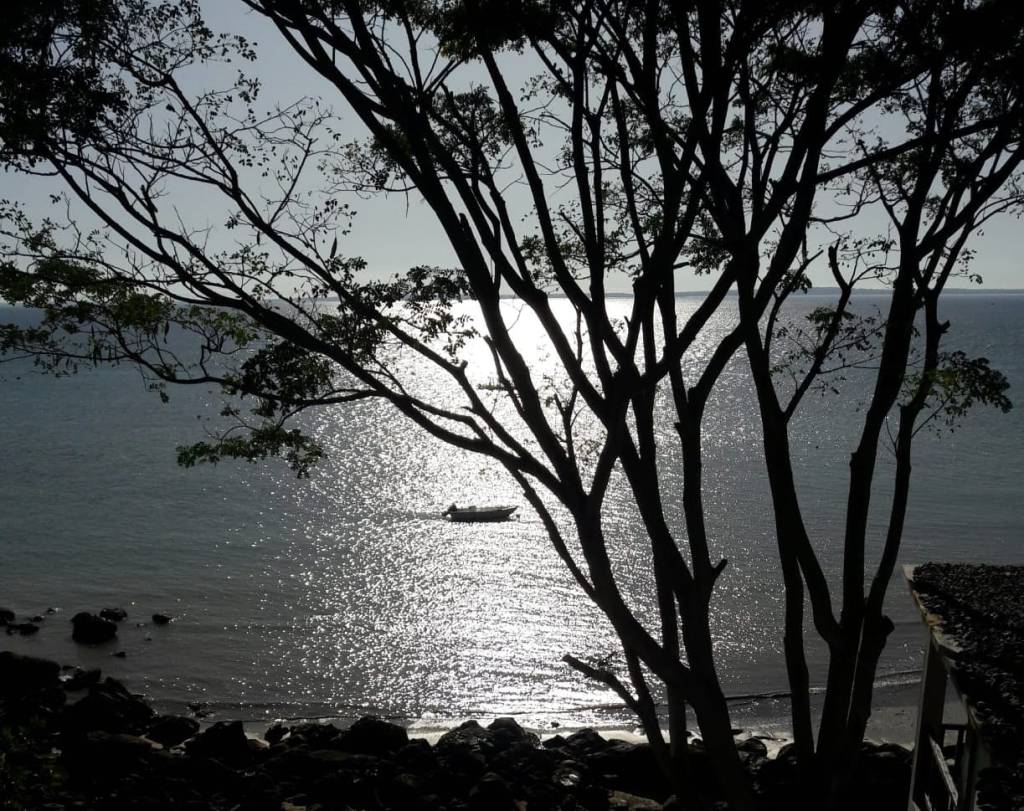South Africans, Isak, and Sunette Venter moved their lives to the tiny island of Nosy Komba just before the Covid storm hit the world. Read all about their lives now and the wonderful place that is Nosy Komba.
Where exactly do you live?
We live on Nosy Komba which is the most populated island in the north of Madagascar after Nosy Be, with approximately 4000 people and is only 20 minutes away from Hell Ville by boat and the same distance from Madagascar, the mainland. It acts as a link between Nosy Be and Madagascar. Its highest point is 622m high. It is also surrounded by volcanic rocks that protect it from the bay’s waves.
Nosy Komba was originally known as Nosy Ambariovato which means “island surrounded by stones”. There are no cars or roads here. Instead, many pathways lead through the forest and up into the mountain.
Our lodge is called Komba on the Rocks and is on the north-eastern side of Nosy Komba. Our nearest village is called Tam Tam.



How did you decide to make the move from South Africa to Madagascar?
We visited Madagascar in 2018 on holiday and fell in love with the place. When we finally returned home it felt as if our definition of home had changed. Our hearts longed for islands, palm trees, and bigger meaning. We sold our business in South Africa and decided to live our dream. In 2019 we bought a piece of land on Nosy Komba and built a lodge that we wanted to be practical, modern, and suited for people who want to escape the daily hustle and bustle of their busy lives to enjoy the serenity of the island.
Because of Covid, it took us 3 years to finally open the lodge for guests. As the locals say, it went “mora mora” slowly, slowly. Today there are 5 chalets, a restaurant and a garden with tropical fruit, and a collection of different fruits, vegetables, and luscious plants.

Many families re-evaluated their lives after Covid came to disrupt our lives, but the Venter family has been living to make the most of their lives for many years now.
A small magazine cutting tells the story of a conversation Kingsley Holgate had about pebbles representing years on earth which has continued to inspire this family.
What is your favourite part of life on the island?
I enjoy what we established here. We started with nothing and changed it to something worthwhile and creative for us and others to enjoy. The chalets, restaurant, and garden add to a deep feeling of infinite gratitude. The daily way of living far from the maddening crowds adds to a soothing experience of inner peace. The softly lapping of the sea, the beautiful mountains on the mainland, the river with its waterfall, and the forest are different parts of this stunning nature. When one is snorkeling one is in awe of the sea’s secrets, baring the magnificent corals and multi-coloured fish.
Here one can lead a healthy life while enjoying the organic vegetables and abundance of tropical fruit and spices like vanilla, turmeric, pepper, cinnamon, and ginger. The favourite time of every day is sunrise and sunset when the day exhibits its soft colours.
I started learning the Malagasy dialect of Sakalava which is spoken in the Northern part of Madagascar and found it helped me with training staff and making conversation with the local people. I love talking to the Malagasy people and learning every day.






What are the challenges of living on an island offshore from Madagascar?
You have to be organised and plan ahead. There is no supermarket on Nosy Komba and we buy our supplies on Nosy Be. Nature sometimes is one’s biggest challenge, especially during the rainy season which is from December to February when the climate is hot and humid with rough seas. Food supplies from Antananarivo to Nosy Be are disrupted due to roads which are then flooded and damaged.
What are things guests can expect to see and do on the island?
The island offers diving, fishing, snorkeling, and kayaking. There are lemurs on the island, from July to September it’s a great time for humpback whale watching and whale sharks visit between August and November. A number of excursions can be arranged from a lunch visit to the highest point on the island to a National Park, local villages and island hopping are a few of the options.



Tell us about daily life on the island.
The main income of the village is fishing. The islanders in their pirogues set out before sunrise to throw their nets and baskets into the sea for a daily catch. Women braid their hair or prepare the meal. The villagers live from their crops and livestock. They grow fruit, vegetables, cacao, pepper, vanilla and other spices.
Our day at the lodge comprises of getting up at sunrise, preparing breakfast for the tourists, discussing excursions and outings, and preparing the rest of the meals for the day. I do food preparation with my staff for example making jam with fruit in season, baking fresh products like bread, pizzas, and wraps, and we preserve fish by making curry fish. Maintenance of the lodge is always important as well as tending to the garden.
Guests who want to go snorkeling swim to the reef in the bay or use the SUP or kayaks to enjoy the ocean. Others are taken on excursions around the island and to nearby villages and islands. At sunset dinner is ready and the guests enjoy a sundowner in the restaurant watching the exquisite view


Contact Sunette and Isak
Website: Komba on the rocks
Email: kombaontherocks@gmail.com
You can follow Sunette and Isak on the following social media handles:
Facebook: Komba on the Rocks
Instagram: Komba on the Rocks
Wow, dis wonderlik, Sunette en Isak! Julle plek is absoluut pragtig!
LikeLike
Una, dis mooi nê? Ek wil net op ‘n vliegtuig spring en gaan kyk.
LikeLike
Dis pragtig daar, Liza, en die natuur klink verruklik mooi. Ek hoop julle kry ñ kans om te gaan inloer.
LikeLiked by 1 person
Eendag dalk! Op die oomblik reis ek maar virtueel saam. Was jy al daar?
LikeLike
This is inspriational – thank you for highlighting what they do.
LikeLiked by 1 person
Thank you Anne. For always popping in and reading what I write. They are adventurous! We can all learn from them to do something if we want to do it! To go grab our dreams hands-on!
LikeLiked by 1 person
Can you please send me your contact details or add me on whats app. Annatjie Harmse 0747593157. Looking for a holday destination in Dec.
Regards
LikeLiked by 1 person
Hi Annetjie, I sent your contact details to Sunette.
LikeLike